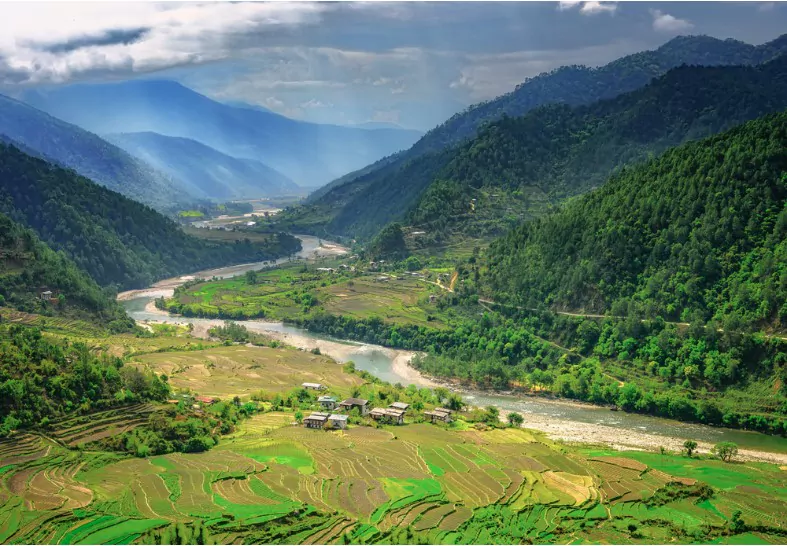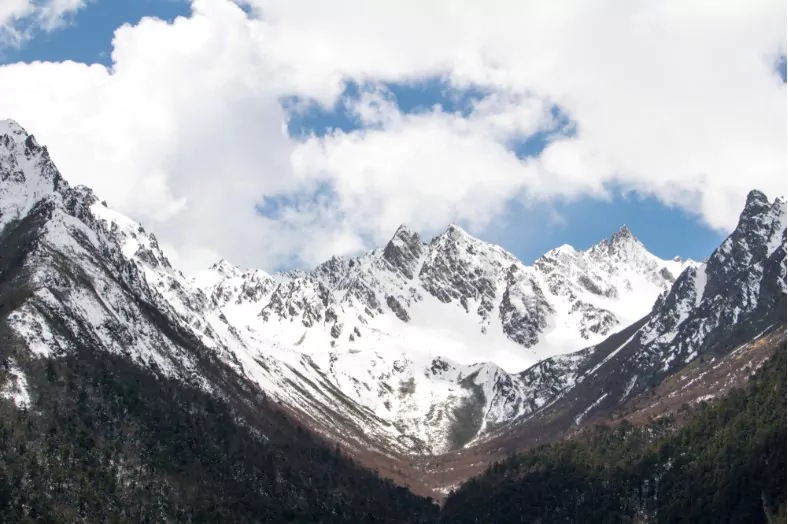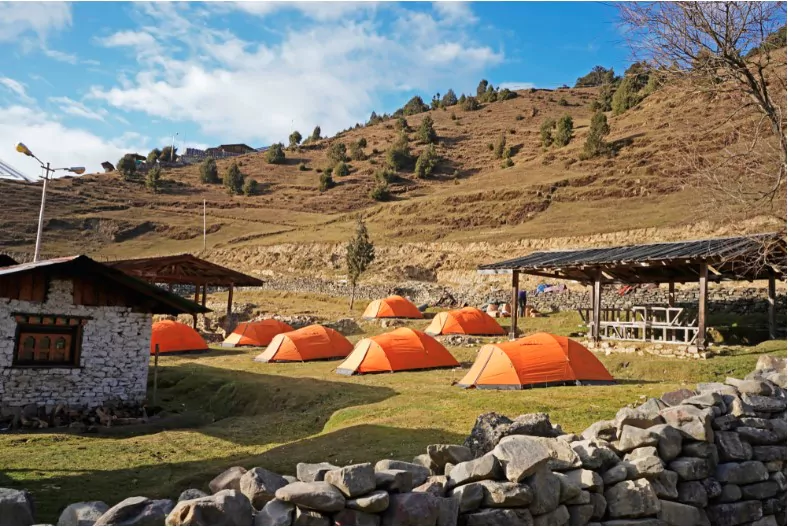Unveiling the Beauty: Best Time To Visit Bhutan

Bhutan, a small Himalayan kingdom, is a gem for travellers seeking a blend of rich cultural heritage, natural beauty, and tranquillity. Known as the Land of the Thunder Dragon, it offers breathtaking landscapes, from lush green hills and beautiful valleys to majestic mountains. Deciding on the best time to visit Bhutan is crucial to enjoy what this unique country has to offer fully. This guide explores the different seasons, festivals, and regions, providing a month-by-month guide to help you plan your Bhutan trip perfectly.
1 Understanding Bhutan's Seasons
Spring Season (March to May)

Spring in Bhutan is a spectacle of scenic beauty. This is the time when the Paro Valley and the entire country burst into vibrant colours with blooming flowers, especially the famed rhododendrons. The average temperature is pleasant, making it the best time to visit for nature lovers and hikers. Key events like the Paro Tshechu and the Rhododendron Festival occur in this season.
Summer Season (June to August)

The summer, or the monsoon season, sees heavy rainfall, especially in Southern Bhutan. While the lush green paddy fields and hills look enchanting, the rainy season can cause travel disruptions. However, the higher regions like Jomolhari remain relatively dry, making summer a good time for trekking in those areas.
Fall Season (September to November)
Fall is another peak season for visiting Bhutan. The weather is dry with clear skies, offering stunning views of the Himalayan Mountains. This is an ideal time for treks such as the Jomolhari Trek and the Druk Path Trek. The popular Thimphu Tshechu and the Black Necked Crane Festival in the Phobjikha Valley are major attractions.
Winter Season (December to February)

Winter in Bhutan is cold, with mild snowfall in higher areas like the Jomolhari Mountain. However, the winter months offer clear views of the magnificent Himalayan range. The Punakha Dromche and Tshechu as well as the Trongsa Tshechu are significant events. In early February, the winter chill begins to mellow, and the stunning Jomolhari Mountain Festival takes place.
2 Festivals and Cultural Highlights
Bhutanese festivals, or Tshechus, are vibrant affairs, marked by dances, music, and religious performances. These festivals offer deep insights into the Buddhist culture and Bhutanese way of life.
Black Necked Crane Festival (November)
Held in the picturesque Phobjikha Valley, this festival celebrates the annual arrival of the black-necked cranes. Nature lovers and bird watchers shouldn’t miss this.
Jomolhari Mountain Festival (October)
This festival at the base of the sacred Jomolhari Mountain celebrates the culture of the communities living alongside the Himalayan blue sheep and snow leopards.
Punakha Dromche and Tshechu (February/March)

Experience the Buddhist culture in full swing with this festival in the Punakha Valley. The serene atmosphere by the Mo and Pho Chu Rivers and the grand Punakha Dzong as the backdrop is truly a sight to behold.
3 Key Attractions and Activities
Tiger's Nest Monastery (Paro Taktsang)

Perched on a cliff in the Paro Valley, this sacred site is a must-visit in Bhutan. The trek to the monastery offers both a spiritual journey and stunning views.
Punakha Dzong

Nestled at the confluence of the Mo and Pho Chu Rivers, Punakha Dzong is one of Bhutan’s most beautiful dzongs and a major tourist attraction, especially during the Punakha Tshechu.
Hiking and Trekking

For adventure enthusiasts, Bhutan offers treks like the Jomolhari Trek, the Druk Path Trek, and walks through Jigme Dorji National Park – the second largest national park, home to Bengal tigers, Himalayan black bears, and Himalayan blue sheep.
Wildlife and Nature

Explore Bhutan’s natural parks like Jigme Dorji National Park and Bumdeling Wildlife Sanctuary for a chance to see the rare black-necked cranes, snow leopards, and other endemic wildlife.
4 Planning Your Bhutan Itinerary

Month-by-Month Guide
January to March: Experience the serene winter months with fewer tourists and clear skies. Ideal for photography and witnessing the winter festivals.
April to June: Enjoy the spring’s scenic beauty with vibrant flowers and pleasant weather. Perfect for trekking and exploring the lush green hills.
July to September: The monsoon season brings lush landscapes but be prepared for rain and travel interruptions, especially in southern regions.
October to December: Clear skies and cool weather make fall an excellent time for trekking and witnessing some of the most significant festivals.
Accommodation and Travel
Paro International Airport is the main gateway to the country. Accommodations range from luxurious hotels to traditional homestays. Booking in advance is recommended, especially during the peak season.
Travel Permits: Bhutan has a unique policy of sustainable tourism. Indian tourists, Bangladeshi, and Maldivian nationals need a permit, while other nationalities must book their trip through a Bhutanese tour operator.
Local Experiences
Visit the Folk Heritage Museum in the capital city, Thimphu, to get a glimpse of traditional Bhutanese architecture and lifestyle.
Try local cuisines, indulge in archery (the national sport), and explore the marketplaces for a slice of local life.
5 Wrapping Up
Bhutan is not just a destination; it’s an experience. Whether you’re visiting for its natural beauty, rich culture, or peaceful atmosphere, planning your visit during the best time is crucial for an enriching experience. From the stunning Tiger’s Nest Monastery in the Paro District to the sacred Jomolhari Mountain and the vibrant cultural festivals, each season in Bhutan unfolds with its unique charm. So, choose the best time to visit Bhutan based on your interests, and immerse yourself in the mystical beauty of this Himalayan kingdom.
Community Q&A
About This Article
This article has been viewed 143 times.



